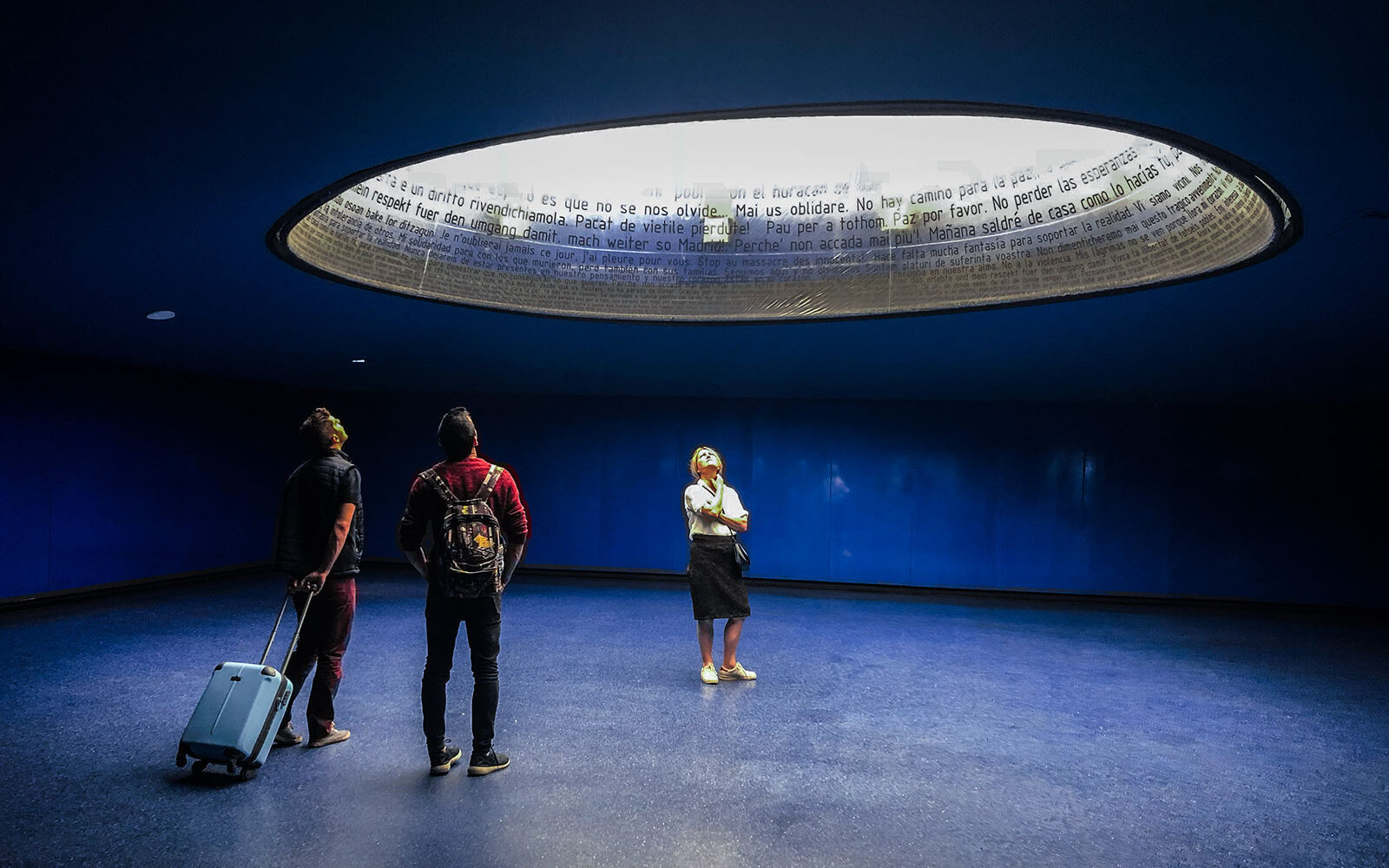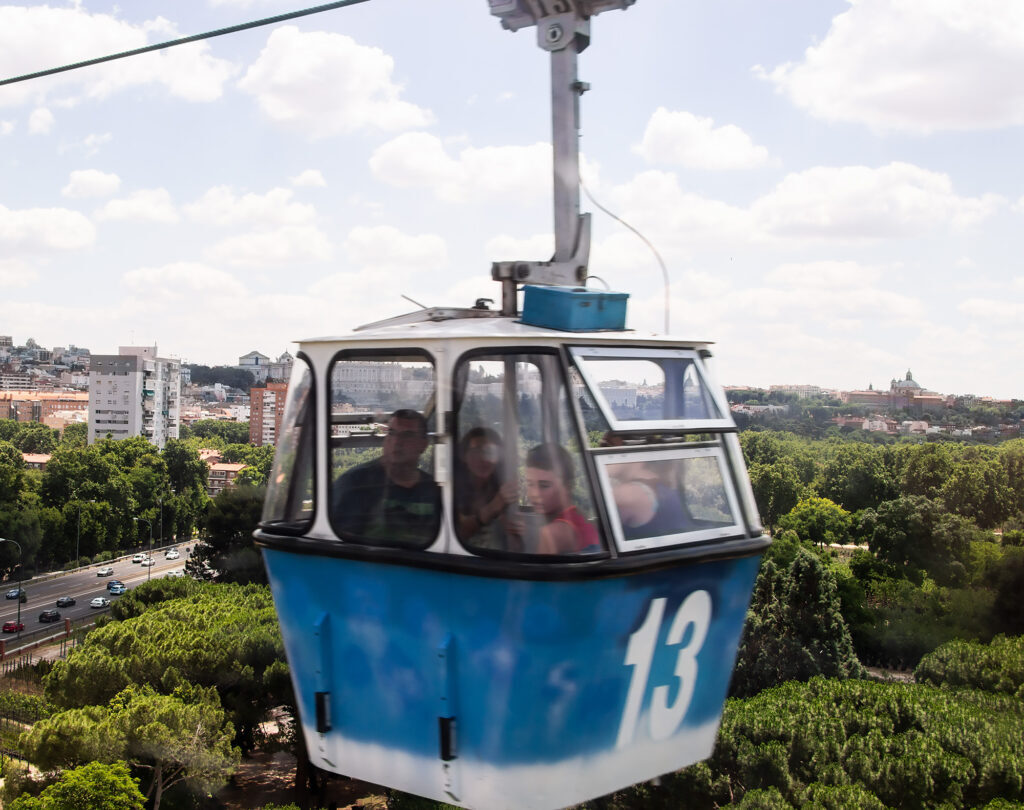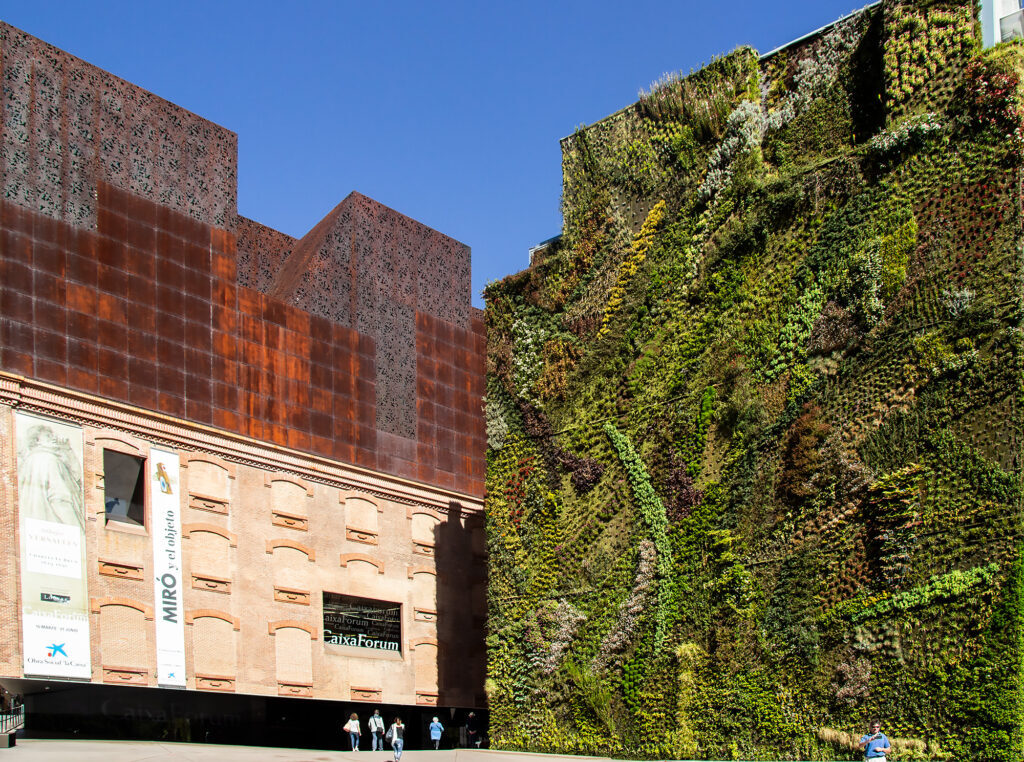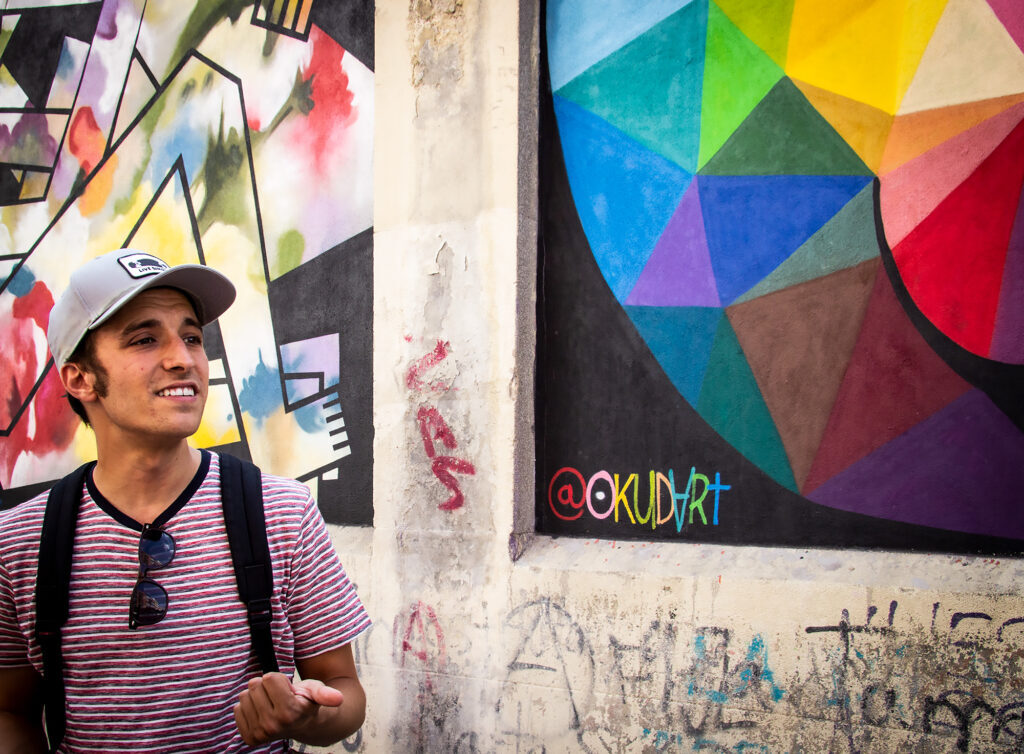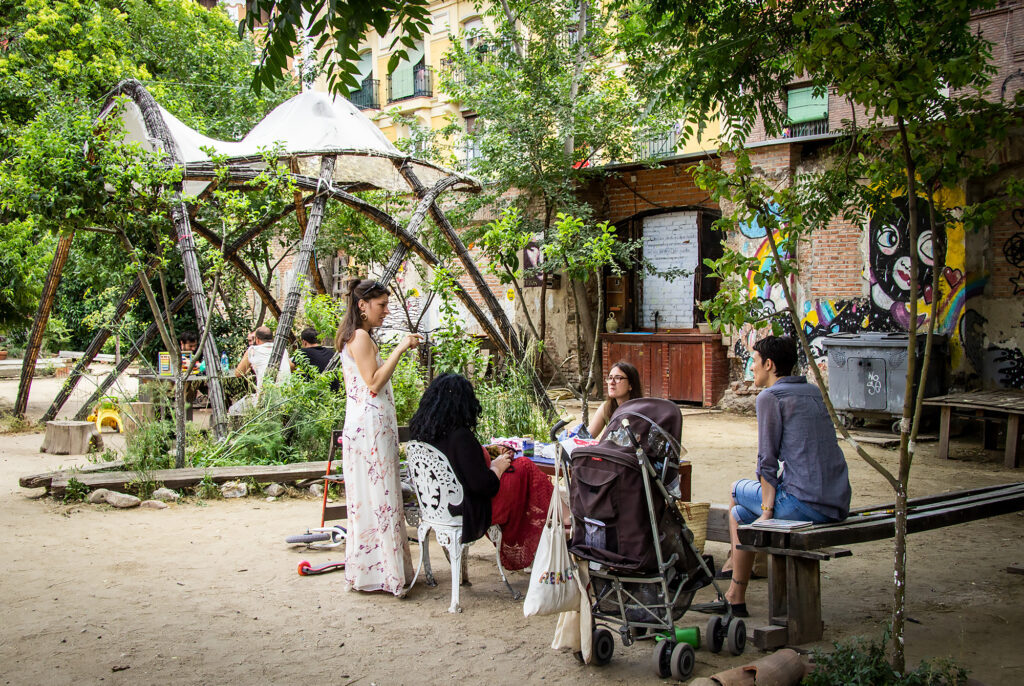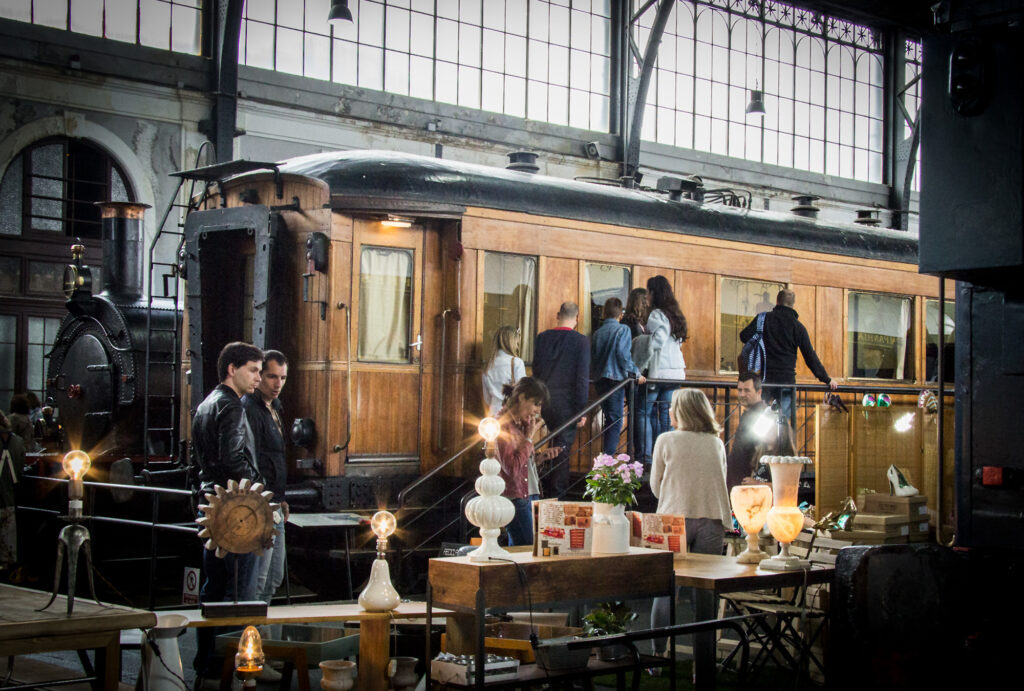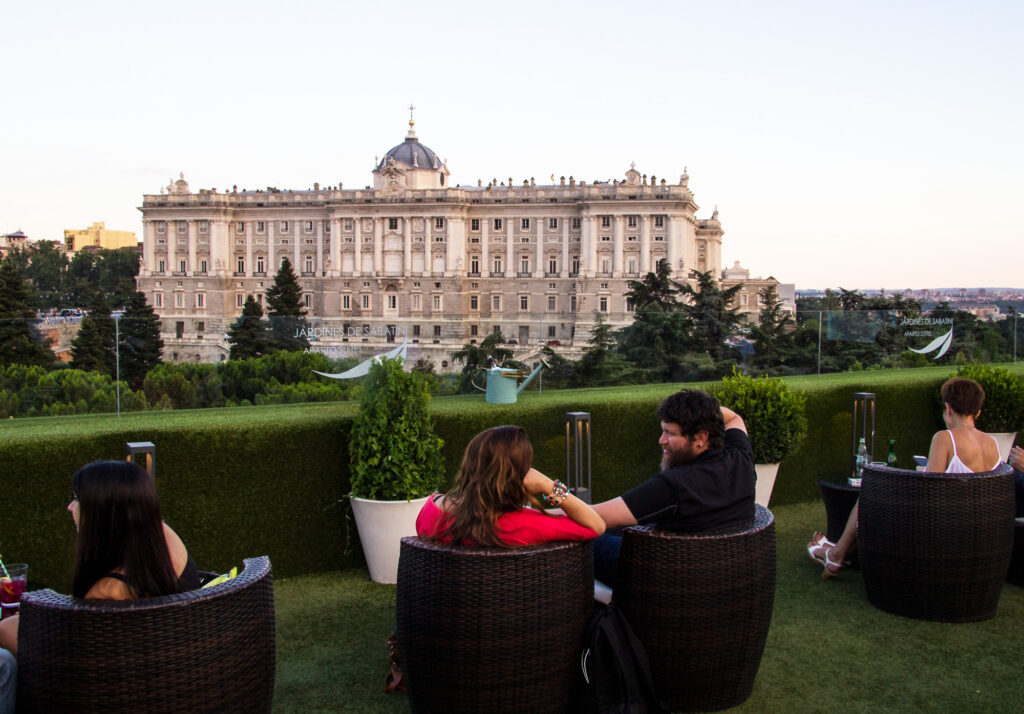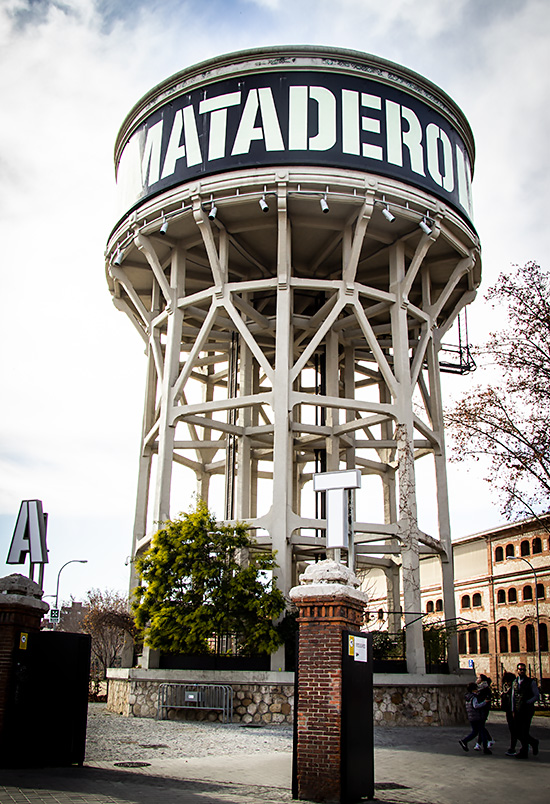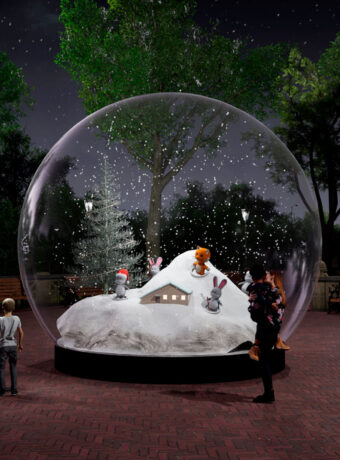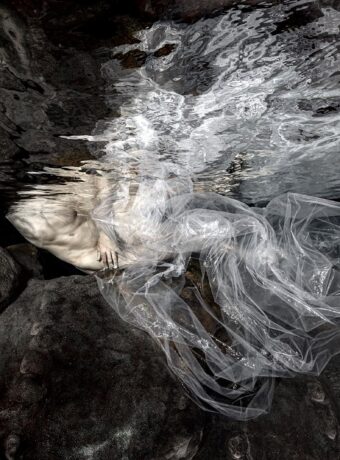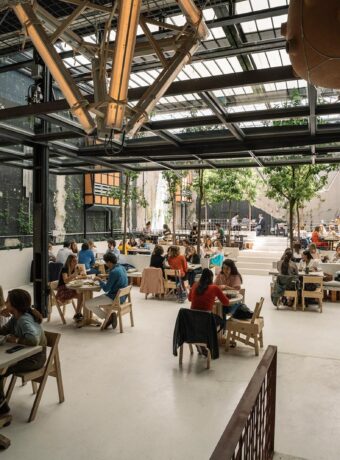Have you visited Madrid’s main sights, or do you just fancy some alternative experiences in Madrid? The Spanish capital is packed with different places and interesting stories. Explore everything from Madrid’s surprising main train station to a cultural meat town and join the locals for a ham museum and seafood party.
1. Central Station with surprises
Madrid’s main train station Atocha is busy and hectic throughout the day, with thousands of people taking the metro, local trains and high-speed trains to and from the city. One corner of the station, however, hides a different experience in a blue room, where the atmosphere contrasts sharply with everyday life and reminds us of the vulnerability of life. The blue room, called 11-M, was created to commemorate the 191 people who lost their lives in the Al-Qaeda terrorist attack on four trains at Atocha station on 11 March 2004.
In the ceiling of the blue room, an 11 meter high glass cylinder rises up and out of the roof in the daylight like a balloon. The cylinder is printed with farewell letters and poems from relatives, as well as condolences from around the world. The texts can be read because daylight illuminates the transparent canvas in the cylinder. Madrid never forgets the tragedy, and the space is a place for reflection and remembrance. At night, the cylinder is illuminated and can be seen from a long distance outside the station.
Atocha station consists of both an old and a new building. In the old building from 1851 you will find
a lovely oasis of a tropical garden under the building’s beautiful iron structure in the large station hall with cafes and shops. The 4000 square metre tropical garden contains over 7000 plants from 260 different species including. Asia, Australia and America, as well as a turtle and goldfish pond.
Estación de Atocha, Glorieta de Carlos V, s/n
2. See Madrid from above
Hop on the cable car, originally built as part of the Parque de Atracciones amusement park, and see Madrid from a bird’s eye view. The 2.5-kilometre walk takes you over the Manzanares River and into Casa de Campo Park. The tour begins at Paseo del Pintor Rosales, at Argüelles metro station, along the way you can admire some of Madrid’s great sights such as the Royal Palace, Plaza de España, the Egyptian Temple, the Cathedral and the business district with the famous Cuatro Torres skyscrapers. The tour lasts 10-15 minutes and ends at the Casa de Campo cable car station, where there is a restaurant, bar and the opportunity to walk around and enjoy the stunning views.
Teleférico de Madrid, Paseo del Pintor Rosales
3. Art gallery and botanical facade
On the museum boulevard Paseo del Prado, close to Madrid’s three major art museums, Prado, Reina Sofia and Thyssen, is the lesser-known modern art museum and cultural centre CaixaForum. The museum is sponsored by Spanish bank Caixa and designed by French architects Herzog & de Meuron, who are also behind Tate Modern.
The distinctive building used to house an electricity generating plant, and its industrial look has been preserved by adorning the facade with oxidised cast iron.
Inside, interesting contemporary art is exhibited in genres such as painting, sculpture, installation and multimedia, and there is also an auditorium, shop/bookshop, café and restaurant.
The wall next to CaixaForum is also notable for its vertical garden, created by botanist Patrick Blanc. Inspired by the botanical garden across the street, the work is a beautiful blend of art, architecture and botany. There are over 15,000 plants in reds, yellows and greens on the wall, represented in over 250 species.
CaixaForum, Paseo del Prado 36
4. Take a tour of Madrid’s street art with a local guide
Local graphic artist Javier shares his vast knowledge of Madrid’s street art on guided tours of the Malasaña and Lavapiés neighbourhoods, where the concentration of street art is high. On the walls of houses and shop fronts you’ll find works by local and international street artists in all styles. Every year, Madrid also hosts street art festivals in its neighbourhoods, so there’s always new and exciting art to discover.
Javier offers both guided street art tours on foot and by bike through his company Cooltourspain, where he also employs several other street art guides. Javier is a walking street art library, and on the tours he talks about the history of street art, the styles and the artists, several of whom he knows personally. I’ve been on several of Javier’s guided street art tours, and they’re entertaining, informative and full of little surprises. The street art tour is a must on the to-do list of alternative experiences in Madrid.
Book street art tours via the website.
6. The urban garden in Madrid’s multicultural neighbourhood
In the middle of one of Madrid’s main shopping streets in the Lavapiés district, Esta es una plaza (This is a square) is an organic and creative urban garden run by locals. Around 10 years ago, residents took over the site to create a green space that they felt the neighbourhood lacked. The municipality closed it down and the residents moved back in. This continued for a while, until the municipality agreed to let the neighbourhood residents run the place.
Esta es una plaza is a free space where there is room for everyone. The only requirement is that you participate and contribute to the site with what you can. There is a playground, an amphitheatre and small areas with benches where you can eat the food you have brought.
The garden grows organic vegetables and herbs, hosts cultural events such as theatre performances, concerts and poetry readings, and community dinners, as well as bicycle repairs and book and toy swaps.
To preserve the local atmosphere and charm of the site, residents have agreed with local tourist guides not to bring groups into the site. But you are welcome to visit if you are a few people, and the place is a really nice place to breathe in the local life.
There’s also plenty of interesting street art to explore, including by renowned Belgian artist ROA.
Esta es una plaza, Calle Doctor Fourquet 24
7. A tourist-free seafood party in one of Madrid’s markets
Mercado de la Cebada in the La Latina district is a local market that sells fresh seafood daily, as well as fruit and vegetables that locals buy for dinner. The market’s many fish and seafood stalls are particularly popular.
At lunchtime on Saturday, the market changes character and the many seafood stalls turn into small bars where locals gather for a communal seafood feast. Boxes covered with paper tablecloths are set up around the stalls, offering a unique feast that few tourists have discovered, and the fresh seafood is among the best in town.
Raw squid, tuna, prawns, mussels and lobsters, marinated in oil, lemon and paprika, are briskly served to couples, groups of friends and families, who enjoy the fresh seafood from shared paper plates. It’s all washed down with white wine or beer, which is included in the price. As the stalls do not have a liquor licence, you do not pay for the drinks. When you buy seafood at one of the stalls, you’re given a plastic glass and you take your own wine or beer, which is in plastic buckets with ice on the floor. You pay for your food by weight or portion. Don’t fool yourself with this authentic, different experience in Madrid.
Don’t be later than 2:30.
Mercado de la Cebada, Plaza de la Cebada
8. Market at the Railway Museum
The city’s most charming market is held on the second weekend of every month at the Ferrocarril railway museum. Here you can shop for vintage clothes, electronics and accessories as well as home goods, organic delicacies and bicycles among old locomotives and train carriages. The sellers are both professionals and private individuals. You can also take a look inside the old trains and see how people travelled in first class in the past. There’s also a nice selection of toys and a mini train for kids to ride. Even the dog can go to daycare while you explore the market.
The market also hosts concerts and a host of food stalls with street food, tapas, beer, drinks, coffee, wine and sweets.
Mercado de Motores, Paseo de las Delicias 61
8. Drinks and romantic sunset over the castle
The rooftop terrace at the designer Apartosuites Jardines de Sabatini is popular in the evenings as the sun sets over Madrid. It offers the most romantic sunset over the castle, and is especially attractive to couples in love. But also some business people staying at the hotel enjoy a drink here after work.
Rooftop lounge furniture is strategically placed in front of the Royal Castle for optimal panoramic views, and the bar serves great cocktails, beer, wine and water, as well as tapas. The roof terrace is small, so it’s a good idea to book a table.
Terraza de Sabatini, Cuesta San Vicent 16
9. Culture in the old meat town
Madrid’s former meat city is located on the Manzanares River, and the old slaughterhouses have been transformed into a cultural village. The neo-Mudéjar brick buildings house everything from a cinema, theatre, exhibition spaces and art studios around a central square that hosts concerts and book and designer markets. There are also a number of cafés and food trunks around the square, and it’s a popular spot for locals to relax with the family at weekends. Also take a walk along the river with different, creative bridges, running and walking paths, skating rink and green areas.
Matadero, Paseo de la Chopera 10
10. The poet’s urban oasis
The Spanish poet and playwright Lope de Vega (1562-1635) is also known as “the Spanish Shakespeare” because of the number of plays he produced. One of the best known is Fuenteovejuna.
The Lope de Vega City Museum is located in a narrow street in Madrid’s Huertas district, also known as the literary quarter because many great writers of the Spanish Golden Age lived here in the 17th century.
Loe de Vega bought the house in 1610 and lived there until his death. In 1935 it was converted into a house museum, and here you can see, on a guided tour, some of the author’s furniture and other personal belongings such as books and paintings, as well as set models for some of his plays. The museum not only shows how Lope de Vega lived, but also gives a sense of the zeitgeist of the great Golden Age writers in Madrid.
The door to the green, quiet courtyard is always open during museum opening hours, so you can always step inside and take a break from Madrid’s hustle and bustle. A guided tour must be booked in advance.
Casa Museo Lope de Vega, Calle de Cervantes 11
More travel tips for Madrid
- For more tips on what to do in Madrid, read this beginner’s guide to Madrid
- Looking for good hotels in Madrid city centre, read the guide to the hotels I’ve tested and recommend in Madrid
- If you’re looking for tips on where to eat and drink in Madrid, read my guides to great restaurants, tapas bars and cafes in Madrid
- Here you can check flights to Madrid and prices
